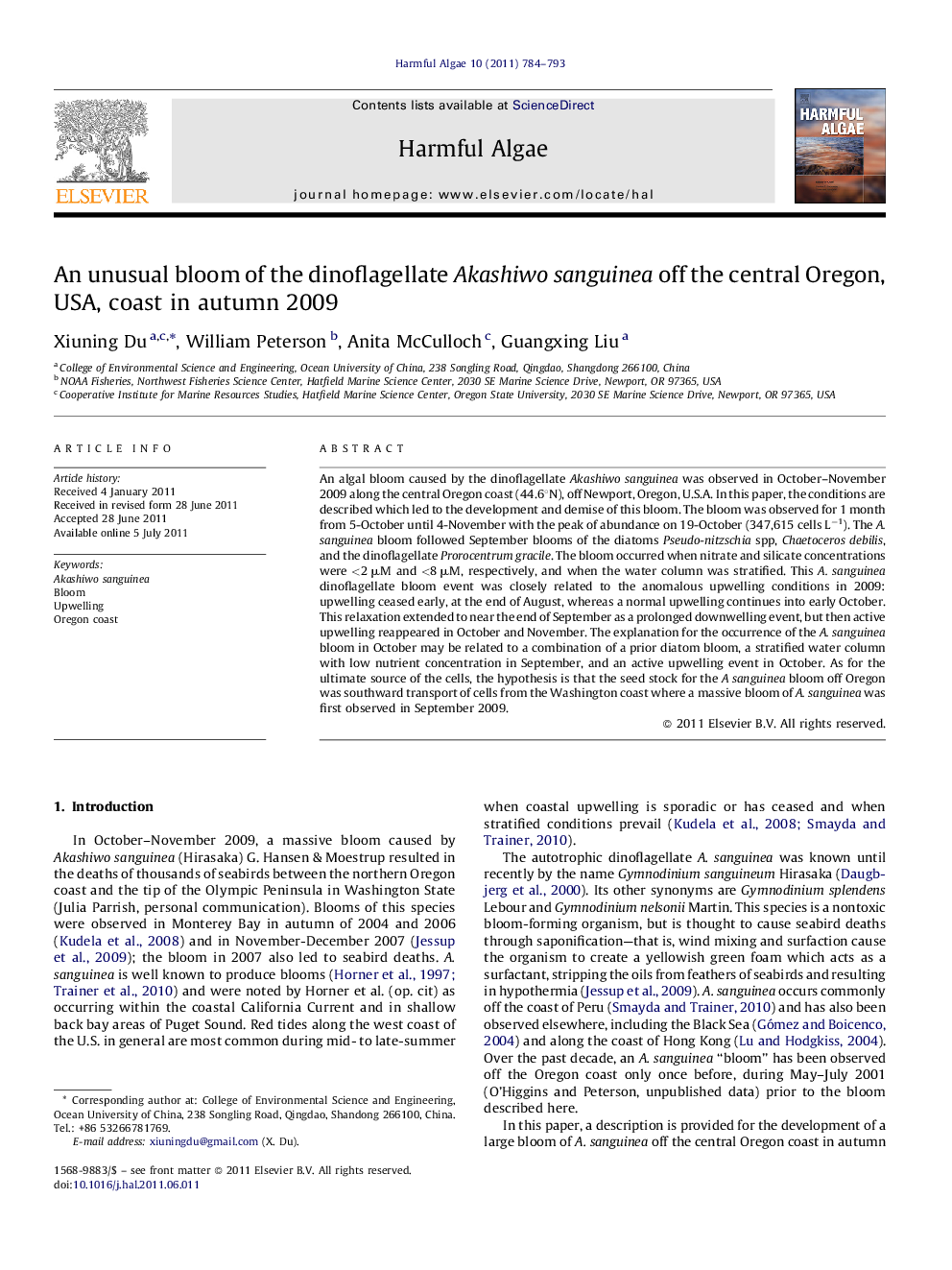| Article ID | Journal | Published Year | Pages | File Type |
|---|---|---|---|---|
| 4545697 | Harmful Algae | 2011 | 10 Pages |
An algal bloom caused by the dinoflagellate Akashiwo sanguinea was observed in October–November 2009 along the central Oregon coast (44.6°N), off Newport, Oregon, U.S.A. In this paper, the conditions are described which led to the development and demise of this bloom. The bloom was observed for 1 month from 5-October until 4-November with the peak of abundance on 19-October (347,615 cells L−1). The A. sanguinea bloom followed September blooms of the diatoms Pseudo-nitzschia spp, Chaetoceros debilis, and the dinoflagellate Prorocentrum gracile. The bloom occurred when nitrate and silicate concentrations were <2 μM and <8 μM, respectively, and when the water column was stratified. This A. sanguinea dinoflagellate bloom event was closely related to the anomalous upwelling conditions in 2009: upwelling ceased early, at the end of August, whereas a normal upwelling continues into early October. This relaxation extended to near the end of September as a prolonged downwelling event, but then active upwelling reappeared in October and November. The explanation for the occurrence of the A. sanguinea bloom in October may be related to a combination of a prior diatom bloom, a stratified water column with low nutrient concentration in September, and an active upwelling event in October. As for the ultimate source of the cells, the hypothesis is that the seed stock for the A sanguinea bloom off Oregon was southward transport of cells from the Washington coast where a massive bloom of A. sanguinea was first observed in September 2009.
► The bloom caused by Akashiwo sanguinea in autumn 2009 was the first large bloom event of this species observed off the central Oregon coast. ► This unexpected A. sanguinea dinoflagellate bloom event was closely related to some anomalous oceanographic conditions in 2009. ► We suggest that the ultimate source of the A. sanguinea cells was southward transport from the bloom that developed off Washington State coast in September 2009.
